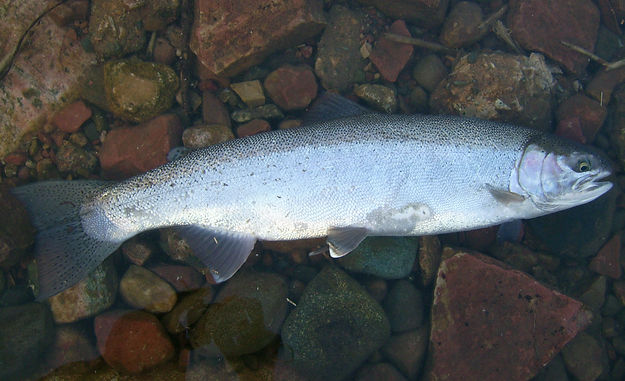
Steelhead
LOCATION
BODIES OF WATER
Where to find Steelhead? Great Lakes and tributary rivers/streams. Found in the Great lakes and its tributary rivers/streams. Western Pa and New York,
New York: Lake Ontario and tributary rivers, Salmon River, Niagara River, Oak Orchard Creek, Genesee River, Cattaraugus Creek, Chautauqua Creek, and Canadaway Creek.
Pennsylvania: Lake Erie Tributaries: Target steelhead in tributaries such as Elk Creek, Walnut Creek, and Twenty Mile Creek during their fall and spring migrations.
Lake Erie Shoreline: Explore the shoreline for steelhead, particularly near creek mouths and rocky points, especially during the fall and spring runs.
Connecticut, Rhode Island, Vermont, Massachusetts, Maine, New Jersey, New Hampshire: Not native or abundant.
STRUCTURE/HABITAT
Steelhead thrive in areas with cool, oxygen-rich water and diverse habitat.
Look for them in riffles, runs, pools, and undercut banks, where they can find shelter and ample food sources.
Pay attention to water temperature, clarity, and flow rate, as these factors influence steelhead behavior.
During their migrations, steelhead are often found near tributary mouths, where they congregate before moving upstream to spawn.
PATTERNS
SPRING
During the spring months, steelhead continue their migration upstream to spawn.
Focus on areas with suitable spawning habitat, such as gravel bottoms and riffles, where steelhead congregate before spawning.
Target steelhead using egg patterns, nymphs, and streamers swung through likely holding areas.
Additionally, consider fishing with brightly colored flies or lures to attract the attention of aggressive steelhead.
SUMMER
In the summer, steelhead seek refuge from warmer water temperatures in deeper pools and shaded areas.
Target these areas using nymphing techniques with small, natural-colored flies fished near the bottom.
Focus on areas with cooler, oxygen-rich water, such as tributary mouths and deep pools.
Additionally, consider fishing early and late in the day when temperatures are lower and steelhead are more active.
Steelhead move deeper in to the great lakes.
FALL
During the fall months, steelhead begin their migration from the Great Lakes into tributary rivers to spawn.
Focus on areas near creek mouths, where steelhead gather before moving upstream.
Target steelhead using egg patterns, streamers, and nymphs drifted along the bottom of pools and runs.
WINTER
In the winter, steelhead can be found in deeper pools and slower-moving sections of rivers.
Target these areas using nymphing techniques with weighted flies or beads fished near the bottom.
Focus on areas with moderate current flow and structure, such as riffles, runs, and deep pools.
Additionally, consider fishing with larger streamers or egg-sucking leech patterns to provoke aggressive strikes from winter steelhead.
Bait
Steelhead can be caught using a variety of bait options, including artificial lures and natural baits.
Popular choices include egg patterns, nymphs, streamers, spoon, and, spinners. It's also common to yuse live bait such as spawn sacs, worms, or minnows.
Experiment with different presentations and sizes to determine what triggers bites.
